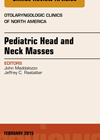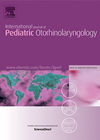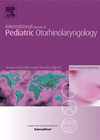
Journal Reviews
Paediatric salivary gland tumours
This is a review article of a rare group of neoplasms that frequently present as painless preauricular mass in older children. There is a wide differential including first branchial arch abnormalities, inflammatory and granulomatous processes. Those masses that are painless,...
Bone anchored hearing devices in very young children
This paper presents results of BC devices in very young children and helps inform an honest discussion of risks / benefit with prospective parents. The authors of this article from Starship Children’s Hospital, Auckland, New Zealand have a series of...
BAHA stability measurement in children
This useful paper reports the experience of using resonance frequency analysis for single stage bone-conduction implants in a paediatric population. A smartpegTM is attached to the abutment and vibrated by a close quarters magnetic field. The amount of vibration is...








